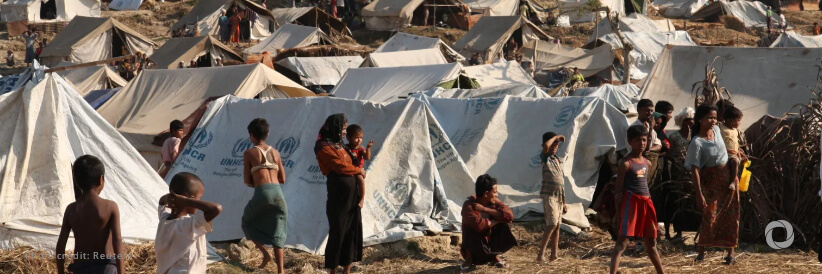At least 2,514 people died in 2024 across Asia’s migration routes, making it the deadliest year on record, according to new data collected by the International Organization for Migration (IOM).
With the migrant fatalities in the region rising year-over-year for the past seven years, the 2024 death toll far surpasses the previous record in 2023 when 1,584 migrant deaths were recorded — a staggering 59 per cent increase in a year.
“No one should lose their life in pursuit of safety or a better future. Every life lost on migration routes in Asia, or anywhere else, is a stark reminder of the urgent need for safe and regular migration pathways — these are preventable tragedies,” said IOM Regional Director for Asia and the Pacific, Iori Kato. “In particular, the increase in deaths across Asia of people fleeing conflict and persecution in the region is of grave concern.”
The dramatic increase in deaths during migration in Asia in 2024 is linked to hundreds of cases involving Rohingya and Afghans on the move. Many of these cases are linked to violence, with at least 357 Afghans and 209 Rohingya killed in 2024, a dramatic increase over the 154 violent deaths recorded in 2023.
At least 1,517 deaths of Afghans in transit in Asia were recorded in 2024, a 39 per cent increase over the 1,089 recorded in 2023. Deaths of Afghans on the move have increased dramatically since late 2021.
Deaths of people from Myanmar more than doubled from 436 recorded in 2023 to 944 in 2024, most of whom (889) were Rohingya. 2024 witnessed a significant increase in Rohingya taking the hazardous crossing from Myanmar to Bangladesh via the Naf River, with over 150 people reportedly killed by artillery fire while waiting to cross the river on 5 August alone.
Across Asia, at least 1,086 males, 205 females, and 217 children died or disappeared during migration, leaving more than 1,000 people unidentified.
“A lack of official reporting of data on missing migrants means we know our data do not fully capture the true number of lives lost during migration in Asia,” said RD Kato. “And even within the records we have, so few identifying details are known, meaning there are immeasurable effects on families searching for lost relatives.”
The growing crisis of missing migrants detailed here and in the forthcoming report is a clarion call for safe, legal routes to prevent further loss of life in Asia and beyond.

